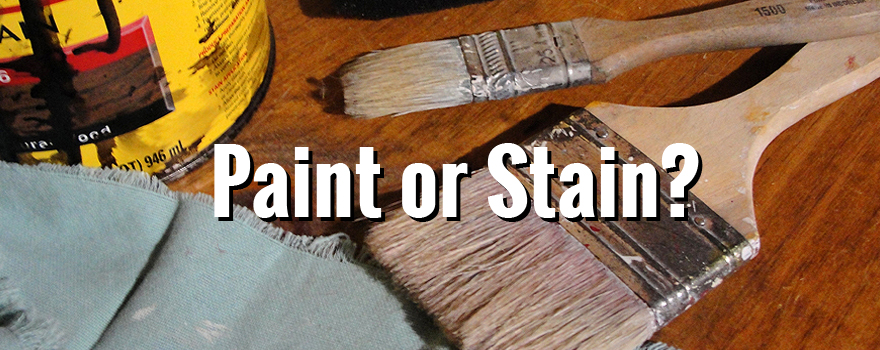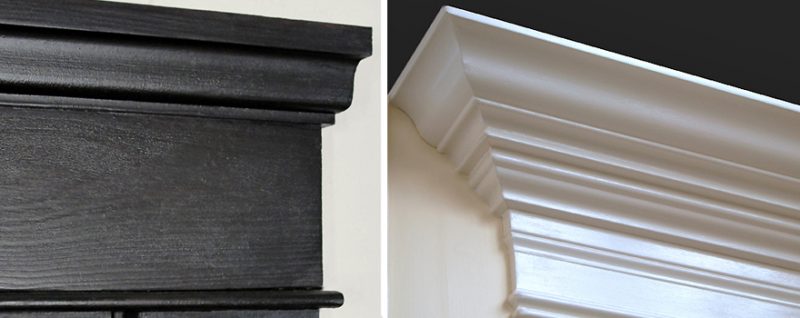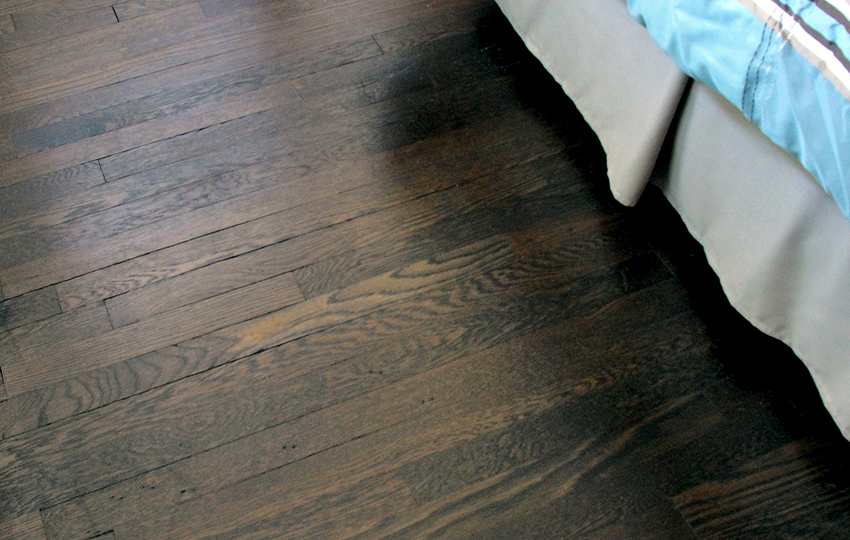General
Paint vs Stain: Some Observations About Adding Color

With Spring and the warmer weather finally approaching, home improvement “to do” project lists start to grow. So, is this the time to add a little color to some areas around your home? Here are a few observations about paint vs stain.
Paint vs Stain
Whether wood or another surface, you can choose to keep it natural or add almost any color. Consider doors (exterior and interior), decking, fences, flooring, moulding, cabinets or furniture. Color can even be added to concrete for a nice effect around the home.
Remember, both paint and stain will add color and some protection. But with so many products on the market, it’s a good idea to speak with an expert. They can help you to choose the correct paint or stain for your project. This will help avoid major mistakes if you plan to do the work by yourself.

Crown Moulding – Projects completed with dark walnut stain (left) and white paint (right)
Paint
- Covers the entire surface and hides it
- Will give a consistent color throughout
- Surface needs to be prepared properly (sanded, scraped, cleaned, primed, etc.)
- Different types (acrylic, latex, enamel, oil-based, etc.) and different finishes (flat, satin, gloss, etc.)
- Will wear over time
- Can crack or peel, especially with constant climate changes or improper preparation of surface
Stain
- Soaks into top surface, but doesn’t obscure its natural appeal (especially with wood)
- Less color choices than paint
- Somewhat less prep work as it usually needs no primer
- A bit easier to apply as it may only require one coat (depending on surface)
- Will wear down over time, especially if outdoors where sunlight and weather affects surfaces
- Needs to be redone every so often (late Spring is a good time to renew)
- Cannot be applied over paint
- Know the wood species of your unfinished flooring as some types do not take stain well

Walnut stained hardwood floor
For paint or stain, preparing the surface before applying color is extremely important and overlooked by many. And the type of paintbrush used can make a difference too. Yes, you can do it yourself. But remember, if the prep work isn’t done correctly, you’re probably going to have issues with the application later on.
For outdoor surfaces, a good plan is to apply on a warm day with no rain in the forecast for at least 24 hours.
For longer surface life when your project is complete, keep exterior areas (e.g. decks) clean of debris. Also, sealer may be appropriate for some projects, especially flooring or decking.
